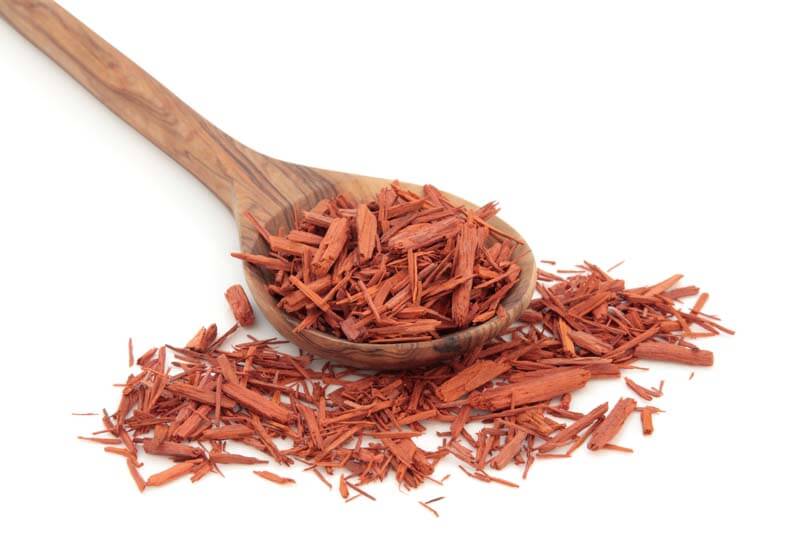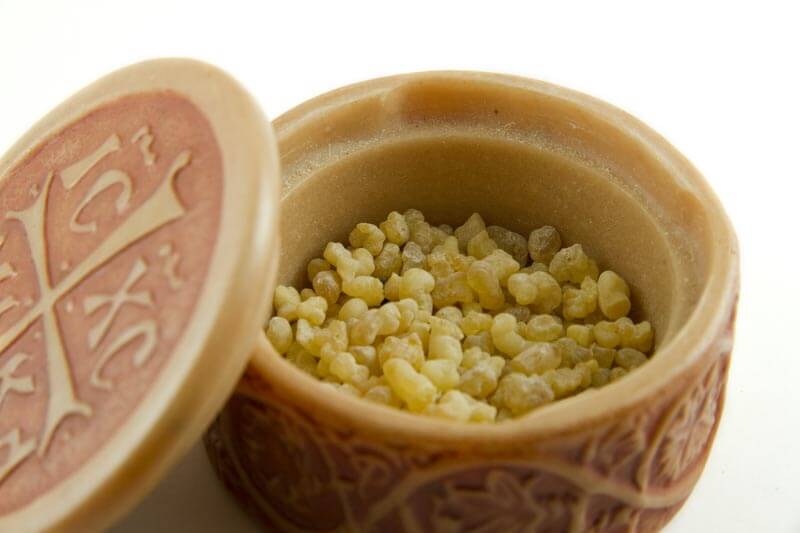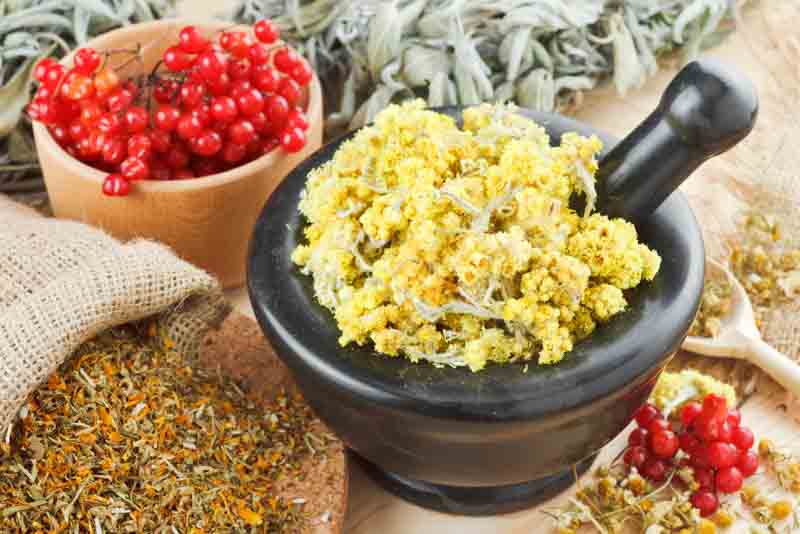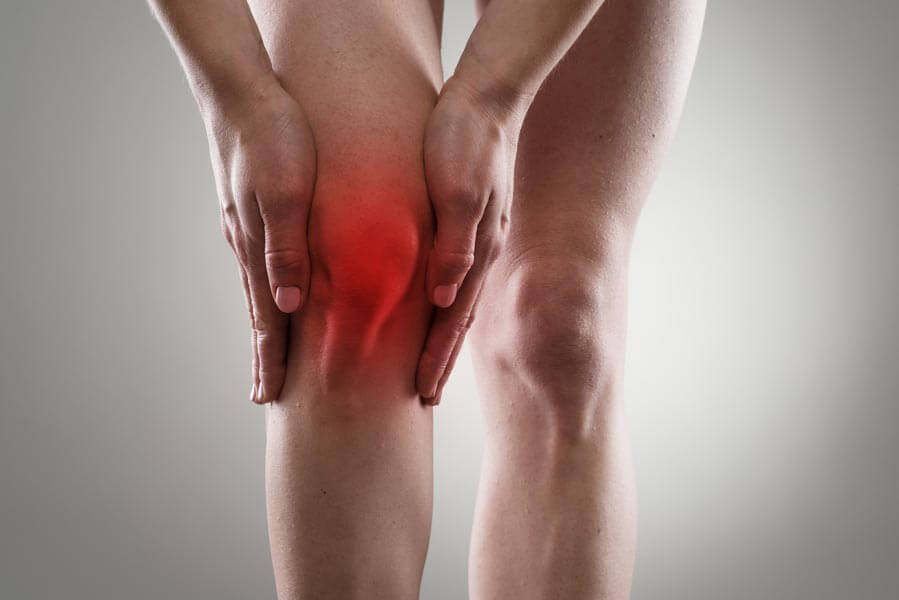
If you suffer from joint pain, you may be seeking help beyond conventional therapies to help you manage your condition.
In addition to discomfort, you may be experiencing stiffness, inflammation, swelling, noise, falling, and fatigue.
The good news is that there are many essential oils that offer natural remedies to treat joint problems, many of which have been in use for hundreds or even thousands of years.
Here are 14 essential oils you should have in your medicine cabinet if you have arthritis or joint conditions.
Joint Health FAQ

Arthritis is the general term used in Western medicine to describe inflamed, sore, stiff, and malfunctioning joints. Did you know there are more than 100 different types of arthritis, including osteo, rheumatoid, and gout? There are many medical conditions that can cause arthritis or joint problems as secondary symptoms, such as fibromyalgia, Lyme disease, and diabetes. Overuse and wear, like that caused by high-impact sports and manual labor, as well as obesity, can also contribute to joint problems.
Arthritis is not a new health concern. Ancient human remains over a half million years old show evidence of degenerative joint disease. Today, about one out of every five adults in the US has some type of arthritis (nearly 70 million people), and more than half of those over age 65 have arthritis. Additionally, more than 250,000 children also have this condition.
While this might seem inconsequential if you are young and healthy, joint disease actually puts a strain on the economy. It is estimated that more than $124 billion is lost each year to arthritis. Not only are people spending money for medical care and drugs, there is a significant amount of economic waste due to decreased productivity and lost wages.
Joint disease is not limited to humans either. Many pets suffer from arthritis too, and it is a particularly common condition in dogs, cats, and horses. Fortunately, many of the essential oils that help humans treat their joint issues can also be used on animals (see recipes, below).
14 Essential Oils for Joint Health
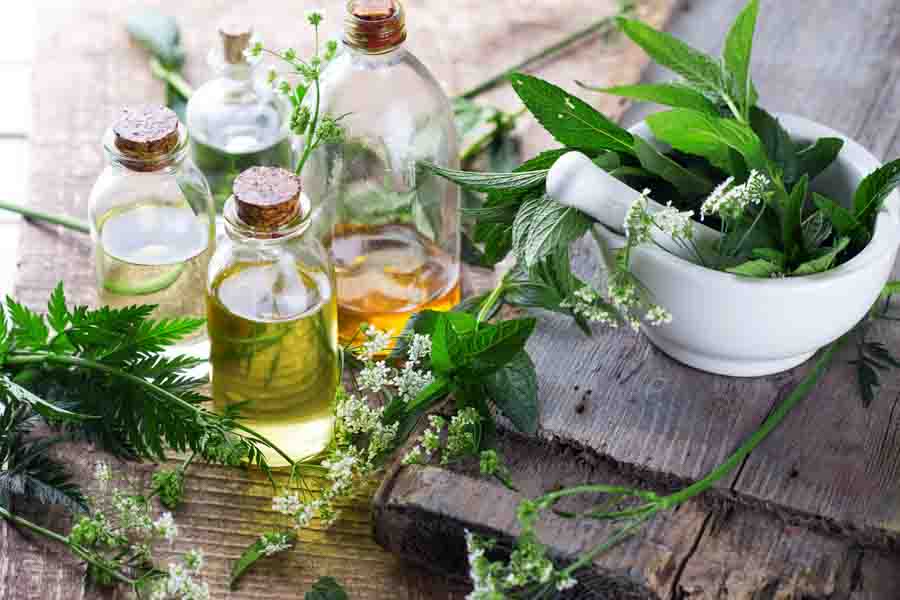
While there are many oils that can support general and joint health, the featured oils below are considered the most important for anti-inflammatory, circulation and warming qualities.
These oils can all be used in a variety of applications, some of which will be listed in the DIY treatment section which follows.
1. Chamomile
Chamomile is one of the oldest and most well studied of all the essential oils for joint conditions. It is a versatile essential oil, offering analgesic and anti-inflammatory properties via its flavonoid compounds, as well as a calming effect on the mind and psyche.
Chamomile also works on joints, muscles, and nerves to relieve pain, so it is an all-around top performer for orthopedic pain. Another of chamomile’s great qualities is its ability to penetrate the skin easily for quick relief.
Finally, chamomile, with its anti-phlogistic and anti-rheumatic properties, increases circulation, which helps to remove spent cells quickly and speeds healing to injured areas. You can apply chamomile essential oil topically, but you can also inhale it for its mental soothing, and you can drink chamomile tea to supplement the effects of the essential oil formulation.
(Learn More | Purchase)
2. Marjoram
Marjoram, which you may have as a dried herb in your pantry, is also an ideal essential oil for joint pain. Marjoram essential oil has both sedative and anti-inflammatory properties, and it’s helpful for both stiff and painful joints. It can also relieve muscle pain. Muscle pain often accompanies arthritis due to compensating for weak joints or tensing the body. Because it is effective on stiffness, marjoram essential oil is perfect to use first thing in the morning, when many people who suffer from arthritis find it difficult to bend and move.
3. Turmeric
Turmeric is another common member of the spice aisle that is also made into an essential oil. It has been very well studied for its multiple benefits, including the treatment of joint pain. It is the curcumin in turmeric that makes it so efficacious, especially for people with rheumatoid arthritis. By working on interleukin-6 (AKA IL-6), a cytokine or intercellular messenger in the immune system, turmeric essential oil helps quell discomfort while it eases inflammation. You can supplement your use of turmeric essential oil by including turmeric spice in your diet; it’s a vital element in many Middle Eastern and Indian dishes.
4. Eucalyptus
You are probably familiar with the soothing aroma of eucalyptus, used in many balms and salves for joint and muscle pain. You can make your own (see recipes, below) with eucalyptus essential oil. This essential oil increases circulation and dilates blood vessels, bringing a feeling of warmth to the area where applied and encouraging healing with improved oxygenation of the blood. You can increase the effectiveness of eucalyptus essential oil by combining it with peppermint and tea tree essential oils.
(Learn More | Purchase)
5. Rosemary
Rosemary essential oil contains both analgesic and anti-inflammatory properties, thereby making it a solid choice for people with chronic pain. Like eucalyptus, it improves circulation, but it also relieves muscle spasms, which may be present along with joint disease. Rosemary essential oil has also been clinically proven to increase the effects of common pain medications, so rather than going up on your dosage or switching to a stronger drug, you could try adding this oil to your personal health regimen. And if you are plagued by arthritis fatigue, rosemary essential oil’s fresh, piney aroma will give you an energizing lift.
(Learn More | Purchase)
6. Clary Sage
Clary sage essential oil is another oil that improves circulation and therefore helps bring healing cells to areas of joint injury. This is thus a great essential oil to use after joint surgery, once your incision has healed. If you have overdone it on the athletic playing field, clary sage essential oil can also help reduce muscle cramps while it soothes aching joints. An added benefit of clary sage essential oil is that it is very calming to the mind and body–wonderful if your arthritis pain makes you tense or keeps you from falling asleep easily.
7. Sandalwood
Most people think of sandalwood essential oil as a classic yoga and meditation scent, and while it certainly clears the mind, it also helps heal the body. Sandalwood essential oil relaxes muscles, mildly sedates the nervous system, and reduces the amount of anxiety-provoking adrenaline your body produces. In scientific studies, sandalwood essential oil had anti-inflammatory properties on par with NSAIDS (nonsteroidal anti-inflammatory drugs, like ibuprofen, naproxen, and aspirin). Like chamomile, you can reap the benefits of sandalwood essential oil by both inhalation and topical applications.
(Learn More | Purchase)
8. Birch
Birch essential oil contains salycylic acid and methyl salicylate, two ingredients common in commercial pain medications. It works on muscle, joint, and bone pain, so it is another good workhorse to have in your essential oil tool kit. Birch essential oil is an anti-inflammatory, and it is also an antispasmodic, meaning it will help quell muscle spasms. Whether you’re an athlete who trains hard, a dancer recovering from injury, or
a long-time arthritis sufferer whose muscles bear the brunt of joint instability, birch essential oil will quiet muscle pain while diminishing joint discomfort.
(Learn More | Purchase)
9. Clove
Clove is a warming essential oil that has anti-inflammatory and analgesic qualities. It’s a classic element in many “hot” commercial rubs and balms, but you can make your own with this potent joint pain buster (see recipe, below). Because clove essential oil is so potent, you only need a drop or two in most recipes, and its scent combines well with other spice-based essential oils, like cinnamon and nutmeg.
(Learn More | Purchase)
10. Basil
Basil essential oil is both an anti-inflammatory and antioxidant agent. The latter property means it help the body rid itself of free radicals that cause cellular damage, including joint degeneration. Basil essential oil is well known for its tension-relieving qualities, and its soothing effect on aching muscles makes it a go-to essential oil for DIY bathtub recipes. While many essential oils are for external use only (see “Tips,” below), basil essential oil is one that can also be taken internally, used in place of dried or fresh basil in recipes or in infused water.
(Learn More | Purchase)
11. Frankincense
Frankincense essential oil, used since ancient times, reduces muscle tension and lowers stress. It also works as both an anti-inflammatory and analgesic by blocking COX-2 enzymes active in the inflammatory process, much in the way NSAIDs do. Frankincense essential oil is a superb choice for preventing further arthritic damage because it helps prevent cartilage from breaking down. Cartilage is the cushion between many bones where they join, and its absence can produce terrible pain and altered gaits from bone-on-bone friction and pinched nerves and soft tissue.
(Learn More | Purchase)
12. Helichrysum
You may be familiar with helichrysum essential oil as a rejuvenating skin therapy, but it is also a top oil for joint ailments. Helichrysum essential oil works as an analgesic and an anti-inflammatory. It is a splendid all-around essential oil, helping to reduce joint, muscle, and nerve pain, as well as swelling, and it can be used daily for chronic pain. The same antioxidant properties that make helichrysum essential oil so powerful for
renewing skin make it helpful for the prevention of further joint degeneration in people with arthritis.
13. Ginger
Do you have pain and extreme stiffness with your arthritis, resulting in a loss of mobility? Ginger essential oil might be the right one for you. Its natural gingerol chemical compounds give it activity as an anti-inflammatory, antioxidant, and low-level analgesic by working on the vanilloid receptors in nerve endings. In clinical trials, ginger essential oil has been demonstrated to work as well as NSAIDs. Like eucalyptus, clove, and cayenne pepper essential oils, ginger essential oil produces a warming sensation on contact, which many arthritis sufferers find palliative.
14. Lavender
One of the most versatile essential oils of all, lavender essential oil is exceptionally well studied. In scientific studies, it performed as well as some common arthritis medications at reducing discomfort, especially the dull ache of chronic pain. Lavender essential oil has anti-inflammatory and analgesic properties, and because it increases circulation, it boosts the level of oxygen in joints to keep them healthier. Additionally, lavender essential oil reduces stress and anxiety, improves the mood, and helps people sleep better. You can inhale lavender oil for its mental health benefits and include it in topical preparations for your joints.
(Learn More | Purchase)
Seven Recipes to Relieve Pain and Improve Joint Function (Including Two for Dogs!)
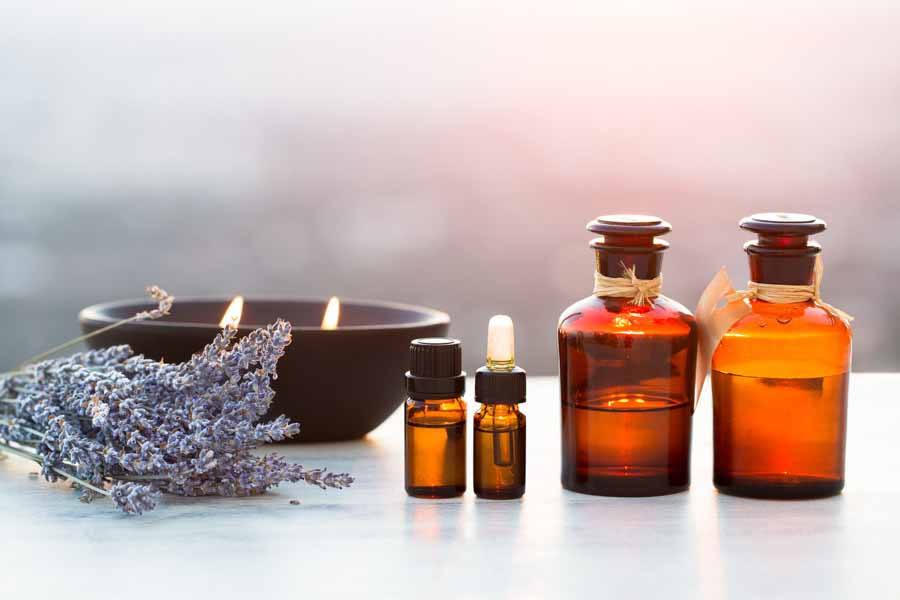
Below you’ll find a variety of established recipes that you can create at home to provide varied support for nagging joint pain.
Since our pets, especially the dogos, frequently suffer from joint issues as they age, we’ve included two recipes for them as well!
1. Pain Relief Roller Ball
Ingredients:
- 5 drops eucalyptus EO
- 10 drops lavender EO
- 5 drops birch EO
- 5 drops rosemary EO
- 3 drops peppermint EO
- 10 ml carrier oil of your choice (argan, avocado, coconut, sesame, sweet almond, jojoba, grapeseed, macadamia)
Directions:
- Add the essential oils to a 10-15 ml roller-ball top glass bottle.
- Top with the carrier oil.
- Cap and roll between the palms to blend.
- Apply as needed to spots where joints are painful, stiff, or swollen.
2. Frankincense Pain Lotion for Body
Ingredients:
- 20 drops frankincense EO
- 20 drops myrrh EO
- ¼ cup shea butter
- ¼ cup beeswax
- ¼ cup olive oil
- ¼ cup coconut oil
- 2 tablespoons vitamin E oil
Directions:
- Place the olive oil, coconut oil, beeswax, and shea butter in a double boiler and melt the ingredients together, stirring occasionally.
- Transfer the mixture to the refrigerator and allow to solidify (about 1 hour).
- With an electric mixer, beat the mixture until it is fluffy.
- Add the essential oils and vitamin E, mixing well.
- Store in a glass jar or cosmetic tub.
- Use anywhere on the body for pain and stiffness.
- (Hint: if you have arthritis in your hands, set aside a small amount in a portable cosmetic jar, so you can carry it with you when you leave home.)
3. Homemade Heat Balm
Ingredients:
- 5 drops clove EO
- 7 drops eucalyptus EO
- 5 drops cinnamon EO
- 9 drops peppermint EO
- 10 drops camphor EO
- ¼ cup almond, coconut, or olive oil
- 1 oz. beeswax
Directions:
- Combine the beeswax and the oil in a double boiler. Warm on low heat until the beeswax melts. Stir to combine the two as the wax melts.
- Pour the mixture into a metal cosmetic tub or a small glass jar with a wide mouth.
- Add the essential oils and stir gently but thoroughly.
- Close the lid to the container, and let the balm cool.
- Wait at least 2 hours before using.
- Apply as needed to sore joints and muscles for immediate relief.
- (Hint: you can play with this recipe to give it different aromas and effects. Using lavender, chamomile, or sage essential oils can add a relaxing note, ideal before bed.)
4. Arthritis Relief Massage Blend
Ingredients:
- 3 drops chamomile EO
- 4 drops eucalyptus EO
- 5 drops of peppermint EO
- 30 ml sweet almond oil
Directions:
- Place the essential oils in a glass bottle.
- Add the sweet almond oil.
- Cap and roll between the palms to blend.
- Apply where needed for full body or spot massage. (Be careful not to get near the eyes, nose, or genital area where there are mucous membranes.)
- (Hint: recipe can be multiplied for larger quantities.)
5.) No More Pain Bath Salts
Ingredients:
- 3 drops eucalyptus EO
- 3 drops rosemary EO
- 2 drops peppermint EO
- 1 cup Epsom salts
- ¼ cup sea salt
- ¼ cup baking soda
Directions:
- Mix all the ingredients above together in a small bowl.
- Empty the the salts a little at a time into the bath as the water is filling.
- Soak for a minimum of 20 minutes to absorb the benefits of the oils.
- Multiply the recipe for more than one bath. Store in a mason jar with a tight fitting lid in a cool, dry location.
- Aging Dog Rub
Ingredients:
- 3 drops lavender EO
- 3 drops peppermint EO
- 2 drops copaiba EO
- 2 drops balsam fir EO
- 3 tablespoons coconut oil
Directions:
- Place all the ingredients above in a glass bottle and mix gently.
- Apply to the dog’s arthritic spots or to the bottoms of the feet to be absorbed into the body. (Don’t allow the dog to lick it excessively.)
6.) Canine Arthritis Spot Spray
Ingredients:
- 10 drops helichrysum EO
- 5 drops peppermint EO
- 30 drops balsam fir EO
- 1 drop oregano EO
- 10 oz. distilled water
Directions:
- Mix all the ingredients above in a spray bottle.
- Spritz on your dog’s areas of concern.
- For dogs less than 20 pounds, reduce the number of essential oil drops by half (except oregano). For dogs over 65 pounds, add 1-3 extra drops of each oil.
- Application: common arthritic areas in dogs include the hips, knees, shoulders, elbows, paws, and back.
Ayurvedic Recommendations for Joint Pain
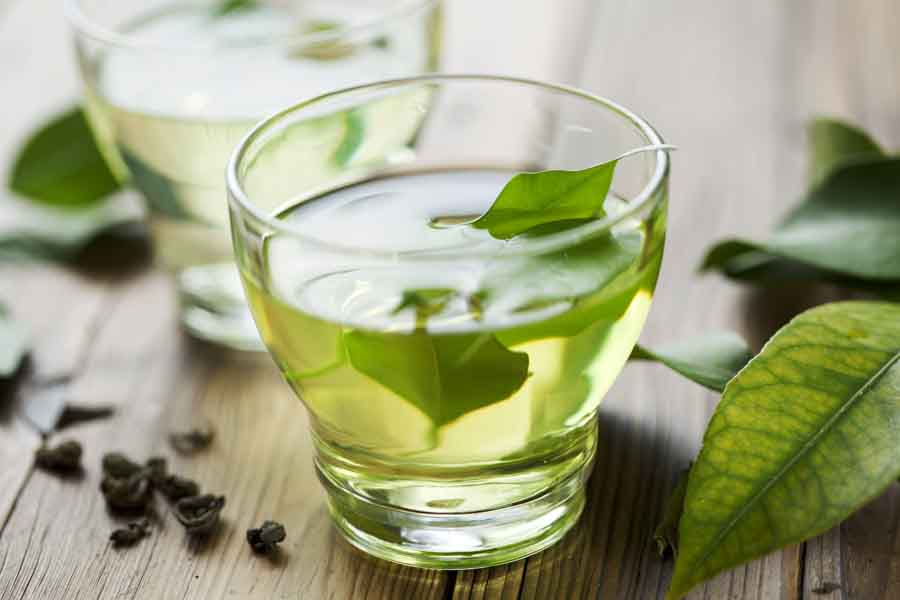
Traditional Ayurvedic medicine provides additional natural methods to treat the challenges of maintaining proper joint health and managing joint pain.
In Ayurveda, both the joints and bones are related to the vata dosha in the body and are interelated. Healthy bone tissue supports healthy joints. Additionally, the joints are connected to important elements of the nervous system.
Proper digestion, or metabolic fire – also called agni in Ayurveda – is an important prerequisite to the happy and healthy functioning of your joints.
Thus to support our joint health and relieve pains we must focus on balancing the vata and agni energies in our body.
Related: The importance of Healthy Digestion: An Ayurvedic Guide to Understanding Agni
Most joint imbalances start from a bogged down and underperforming digestive tract, specifically in the colon.
To remedy this we must enhance agni (digestive fire) and clear out ama (toxins). We must also boost the efficacy of fundamental tissue nutrition. Without proper nutrition and lubrication our joints can become dry, start to crack and pop – resulting in chronic pain.
Below are a variety of Ayurvedic recommendations for alleviating joint pains

Boost agni and clear toxins with a cleanse
Depending on your commitment to cleansing, you can try:
- A one-day digestive reset cleanse
- A three-day cleanse
- A Traditional Ayurvedic cleanse (determine your own timeframe)
- A Panchakarma cleanse (a longer, multi-week deep cleanse to fundamentally reset and rebalance the system)
Directly support colon health with Triphala
Triphala, the ancient three-fruit digestive tonic blend offers potent colon cleansing capabilities along with overall digestive system support.
It’s recommended that you try out a consistent daily regime of triphala. You can try it in these forms:
- Triphala Powder – simply steep ½–1 teaspoons in a cup of boiled water for 10-20 minutes; cool and drink.
- Triphala Tablets – about a half hour before bed take (2) tablets.
- Triphala Liquid Extract – place 30 drops in a warm drink 30 minutes before bed.
Learn more about triphala here.
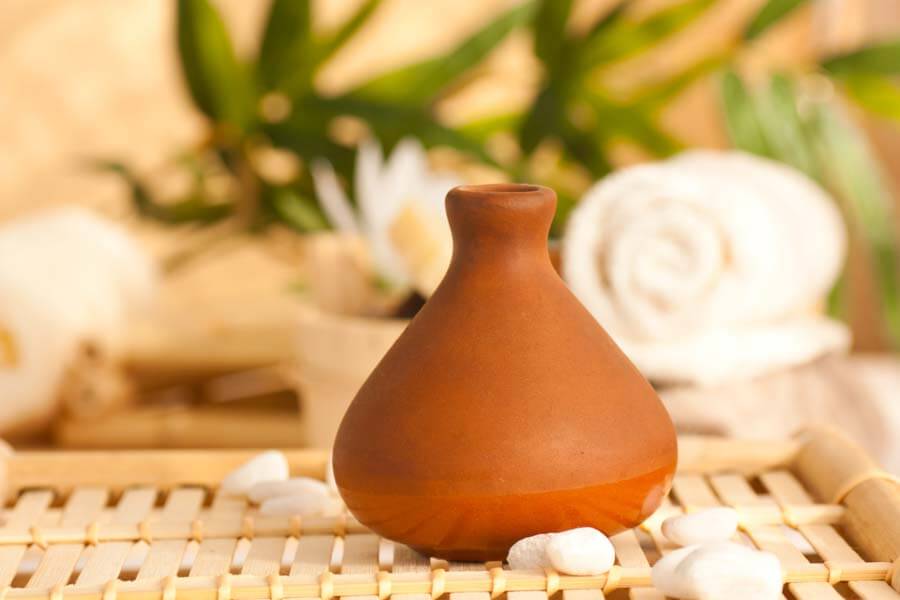
Apply a soothing, herbal balm directly to tired joints
Directly treating your joints with a massage and herbal joint balm can quickly alleviate pain, promote the removal of toxins, lubricate the joints and increase circulation.
You can use this balm regularly to address discomfort and promote rejuvenation of tissues.
Utilize herbal supplements that directly support your bones and joints
- Joint support tablets – these tablets make use of ingredients like guggulu and boswellia to penetrate into tissue and soothe, lubricate and detoxify the joints. The ingredients also nourish and rejuvenate muscles, cartilage and bones.
- Healthy bones tablets – As mentioned before, the bones and tissues are closely related. So making sure your bones are happy can help ensure that your joints stay happy too. These tablets provide herbs that fortify and rejuvenate the bones.
Cayenne Pepper Oil
Arthritis sufferers with constant throbbing pain often find relief with cayenne pepper oil. This essential oil combats compound P, a neurotransmitter (messenger between nerves) that is active in arthritis. Like ginger, eucalyptus, and clove essential oils, cayenne pepper can be warming; this can be soothing, but be careful to just use what’s needed. Start with smaller amounts! You can find cayenne pepper oil here.
If you have any more questions about Ayurveda and joint health you can learn more here on the Banyan Botanical blog.
Closing Tips for Using Essential Oils to Treat Joint Conditions

If you have any questions about using essential oils to treat joint problems, consult your healthcare provider first, especially if you are pregnant or nursing. Never substitute an essential oil treatment for a medication you have been prescribed without talking to your doctor first. You may be able to ease off some medications, depending on the severity of your arthritis, if you find help from essential oils. Otherwise, essential oils can help enhance existing drug regimens and can help keep joints from further deterioration.
It’s best if you first dilute your essential oils in a carrier oil, like jojoba, olive, or coconut oil. This way you can avoid any adverse effects from particularly potent or heat-producing essential oils, like cayenne pepper and eucalyptus. Also, it may be best to do a patch test on a small area of skin before applying any essential oils topically on a larger scale to avoid sensitivity reactions.
When using essential oils on your pets, consult your veterinarian first. Cats can be especially prone to reactions from some plant-based products, but there are many essential oils that work just fine.
Avoid using essential oils on broken skin, such as surgical incision sites. Most of the essential oils above are generally for external use only; internal use or use on wound dressings should be under the care of a health practitioner experienced with essential oils, unless the oil is indicated for ingestion (you can look at the EO Sanctuary articles about individual oils for more information on this).
As you can see from the recipes above, combining oils can give you the additive effects of the individual oils. As long as you are using the essential oils externally and in small recommended amounts, there is no downside to experimenting and combining oils for your unique conditions. Plus, you get the extra benefits of multiple oils, such as those that can improve your mental health as well as your physical health.
The list above is by no means comprehensive. The plant world is full of species that yield arthritis relief through essential oils. Some other essential oils that also fight joint disease include:
- yarrow
- blue tansy
- peppermint
- osmanthus
- myrrh
- juniper
- wintergreen
- vetiver
- thyme
- lemongrass
- orange
- camphor
- oregano
Conclusion
Hopefully you’ve found this post helpful. If you have any questions, comments or recommendations of your own concerning natural ways to treat joint pain or arthritic conditions please let us know in the comment section below!






